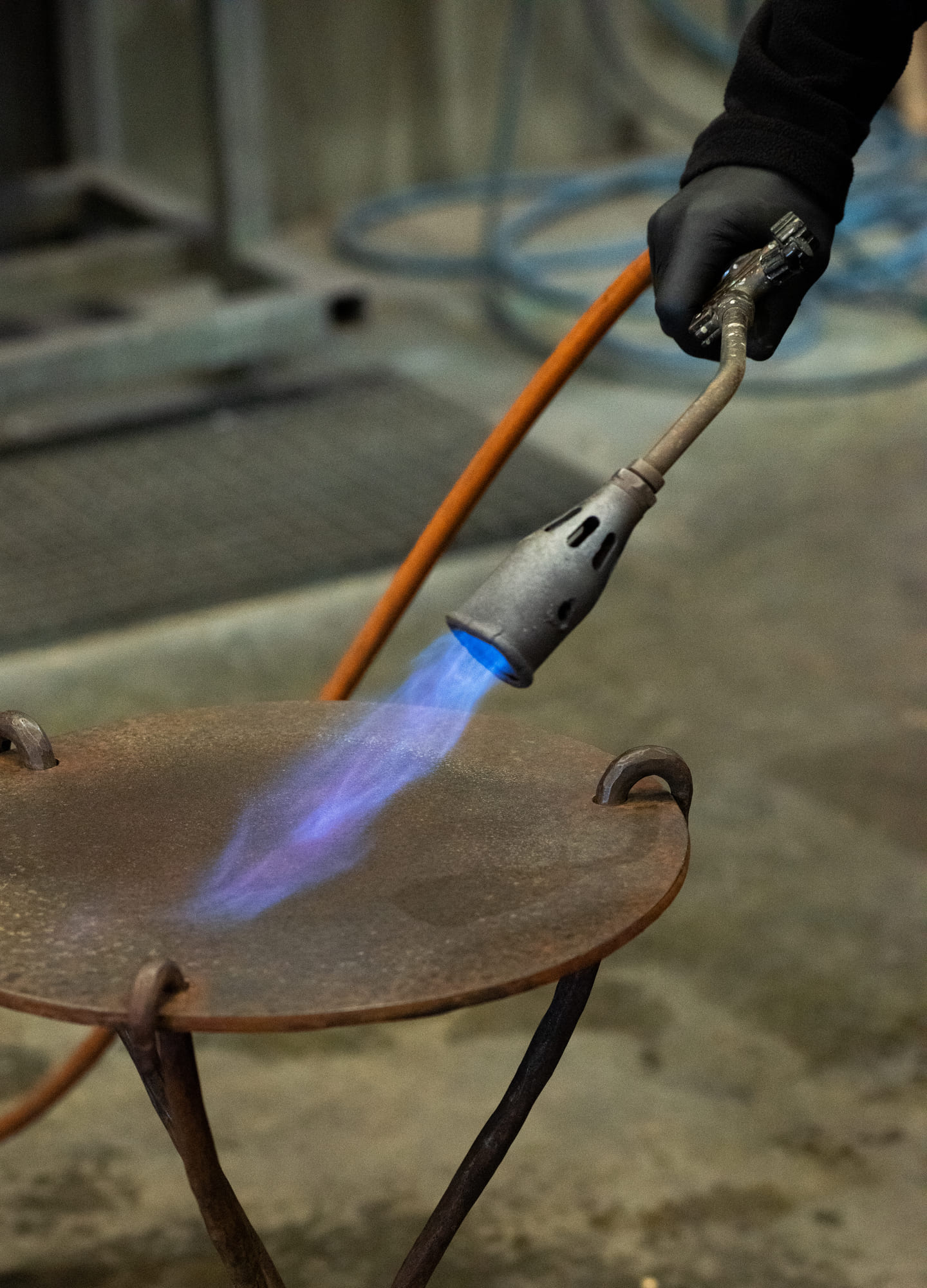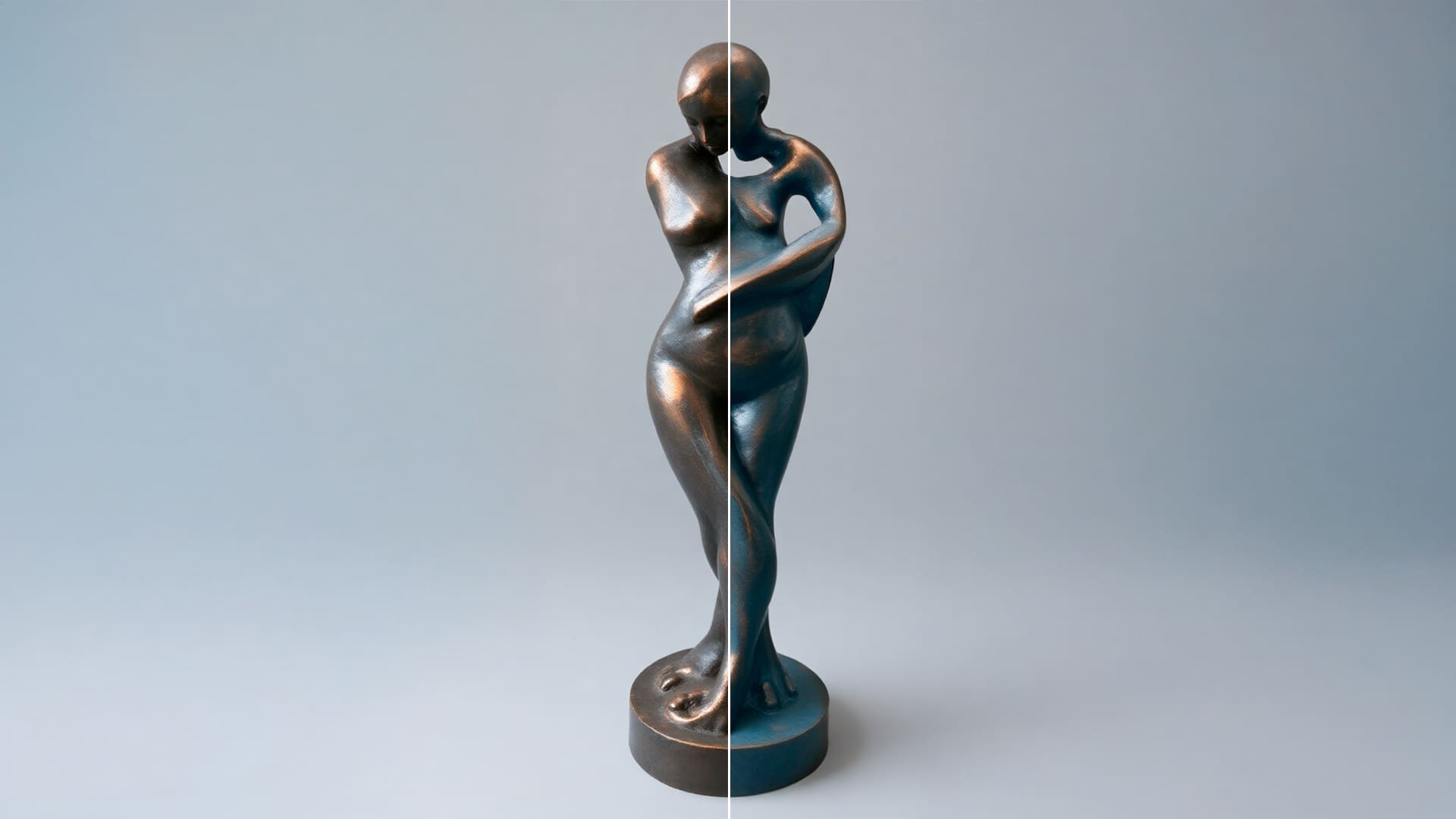Bluing is a technique widely used for the finishing and protection of metal sculptures. It is applied not only for the visual appearance of works and sculptures, but also to protect them from corrosion and weather factors. In this article we will see in detail what is bluing, how it is carried out and what are the advantages of using it.
What is bluing and how is it performed?
Bluing is a chemical process that generates an oxidation layer on the most superficial part of the metal. Its main function is to protect the sculpture and improve the visual finish with a characteristic darker tone. The treatment is generally used on metallic pieces such as iron, bronze or steel, although it can also be used for other metals.
Bluing Process
Bluing can be employed using either chemical or thermal processes, depending on the type of sculpture or finish desired. Generally, the process is as follows:
- Metal cleaning. Before bluing, all impurities, grease or oxides on the parts must be removed with chemical products that are degreasers and mild abrasives. Cleaning the metal is a fundamental task that usually includes techniques such as washing with hot soap that ensures the complete elimination of possible residues.
- Chemical solution bath. The sculpture is immersed in an alkaline or acid solution that reacts with the metal. Other compounds such as sodium nitrate or potassium nitrate can be used here, which will affect the piece in one way or another.
- Formation of the oxide layer. The chemical reaction causes a dark patina that acts as protection, generating a black or bluish-black color that varies according to the type of bluing used.
- Sealing and protection. An oil or wax can be applied to act as protection to improve its resistance to corrosion or to extend the useful life of the sculpture.

Applications and advantages of bluing in sculptures
Bluing is a technique widely used in metal sculptures due to its multiple benefits.
Main applications of bluing
- Bronze, iron or steel sculptures. It can be used to improve the finish of the pieces and protect them from the natural oxidation of metals.
- Sculptures for outdoor exhibition. Its resistance to adverse weather conditions or weathering makes it a great option for works in public spaces.
- Restoration of metal sculptures. It allows to recover the original appearance of deteriorated pieces with the passage of time.
Advantages of bluing
- Corrosion protection. This oxide layer that is created acts as a barrier against moisture and oxygen.
- Aesthetic and elegant finish. Generates a beautiful deep black or bluish-black color that highlights the details of the sculptures.
- Low maintenance. Allows maintenance based on occasional cleaning and reapplication of protective wax.
Types of bluing: Cold vs. hot bluing
There are two main types of bluing techniques: cold and hot. Both offer a series of specific advantages depending on the type of sculpture and the exposure to environmental factors that will affect the work.
Cold bluing
Cold bluing is performed at room temperature, using chemical solutions that generate the oxide layer on the surface of the metal. It is a process recommended for small pieces or indoor sculptures. Its resistance to humidity and climatic changes is lower compared to hot bluing. Although its aesthetic finish may be more attractive, its durability may be inferior in environments with high exposure to weathering.
Hot bluing
Hot bluing, on the other hand, requires the immersion of the pieces or sculptures in chemical solutions heated to temperatures of 140-150ºC. With this method, a more uniform and resistant oxide layer is formed, making it the ideal option for sculptures that are going to be exposed outdoors. However, it is generally a slower or more tedious process due to the need for specialized equipment or precise temperature control, also increasing its cost.
How Bluing protects Sculptures from corrosion
For sculptures, one of the biggest problems is oxidation, especially in humid climates or coastal areas. Bluing creates a protective layer that acts as a barrier against moisture or corrosive agents. In addition, sealing with oils or waxes further improves the sculpture’s resistance to environmental exposure.
Tips for maintaining a Paved Sculpture
To maintain a blued sculpture, wax or protective oil should be applied at least every 12 months. In addition, caution should be exercised with the use of abrasive products on the piece, as these could damage the oxide layer. Finally, and most importantly, we recommend always cleaning with a soft cloth and neutral products to avoid premature wear.
As we have seen, bluing is an essential technique for the protection of sculptures. If applied properly, it can ensure greater durability and corrosion resistance, as well as the appearance of the works. If you are looking for a durable solution for the conservation of your sculptures, bluing is a great solution. Contact us to learn more about our restoration and conservation service.

